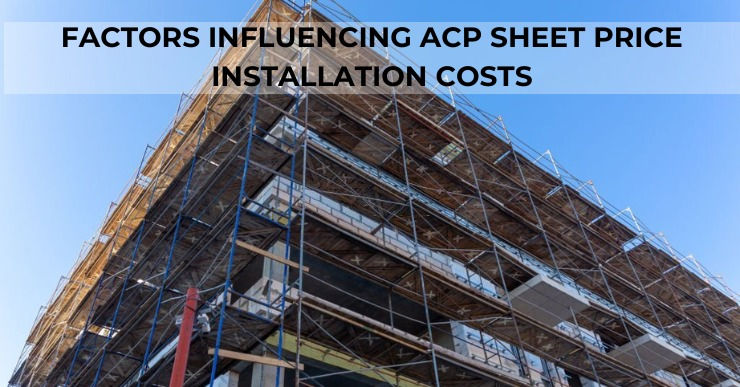A Brief Guide To Understanding ACP Sheets Better
- Vijay Raj

- Nov 1, 2021
- 3 min read
Updated: Nov 27, 2023
ACP is a typical abbreviation for aluminium composite panel. Aluminum composite material (ACM) is used, which is made up of two thin coated aluminium sheets. It performs better in terms of the advantages and disadvantages of the new material because it is made up of two different components, metal and non-metal, as aluminium is metal and polyethylene plastic is non-metal.
ACP is the abbreviation for aluminium composite sheet. A sandwich panel is another term for this. The aluminium composite panel was developed by 3A Composite Corporation in collaboration with BASF in 1964.

Why Should You Use ACP Sheets?
There will be no product as light as the ACP Sheets. It's also a cutting-edge material with numerous functional and technological advantages over traditional materials.
Exceptionally adaptable.
It can be constructed in a short period of time.
It is a cost-effective solution.
It offers a wider range of color and texture options.
It's dependable and simple to use.
It's incredibly simple to work with.
It's not too heavy.
It's simple to set up.
The ACP Sheet has a variety of applications.
Exterior cladding or building facades, signs, canopy shops, bar and hotel, retail centers, commercial buildings, and offices are all examples of where aluminium composite panels are employed. It is presently utilized for wall coverings, false ceilings, cupboards, portable kitchen cabinets, tabletops, column covers, and other interior applications. It's also employed in the aircraft industry, where mechanical efficiency and weight reduction are key.
The Benefits of ACP Sheets:
ACP is environmentally friendly, and the panels are often made up of over 85% recycled aluminium.
Aluminium may be used to accurately simulate the colour and texture of real stone and wood.
Composite aluminium panels are available in roughly 40 different hues, and they can also be rendered in custom colours to match the building's design.
Despite its lightweight, this is a remarkably stiff, sturdy, and substantial substance.
Excellent exterior stability and little thermal expansion at the same ambient temperature of – 52 to + 80 degrees Celsius.
In comparison to other cladding materials on the market, it is a relatively affordable option.
It comes in a wider variety of hues.
It is termite and fungus resistant.
It's also indestructible, temperature-resistant, and stain-resistant.
It's pleasingly adaptable and simple to work with.
It's resistant against UV rays and chemicals.
It's simple to use, and we can set it up quickly.
Neither substance is as long-lasting as a composite aluminium panel, but it can be utilized for applications that are too complex or prohibitive for other materials.
On the surface, it has a smooth finish.
Conclusion
At Viva, They work hard to make your cladding fantasies a reality. They consider ourselves to be one of India's top producers and suppliers of high-quality Aluminium Composite Panel. Their adventure began in 2003 in Mumbai, Maharashtra, and the value we have brought to the ACP sheet business throughout the years has been synonymous with Trust and Reliability.
Their cutting-edge ACP cladding production facilities in Umbergaon, Gujarat, are equipped with world-class machinery and cutting-edge technology, allowing us to manufacture cutting-edge products and offer perfection to consumers all over the country.
Viva uses state-of-the-art Korean machines and a professional and passionate team to complete our entire ACP panel manufacturing process in a seamless and streamlined manner. Plus, there's more. Their factory is equipped with all of the necessary safety features, as well as a solar power generator that creates 850 Kwh of energy and ensures that ACP sheets are produced smoothly. They also have in-house testing facilities with 60 different types of testing equipment to ensure that ACP panels are manufactured to exact standards.



Comments